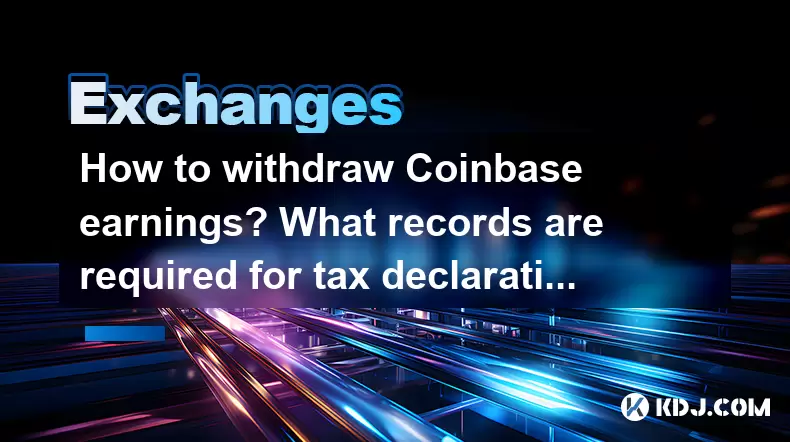-
 Bitcoin
Bitcoin $112400
-1.07% -
 Ethereum
Ethereum $3409
-3.27% -
 XRP
XRP $2.784
-6.60% -
 Tether USDt
Tether USDt $0.9997
-0.03% -
 BNB
BNB $739.3
-2.09% -
 Solana
Solana $158.0
-2.90% -
 USDC
USDC $0.9998
-0.02% -
 TRON
TRON $0.3213
-0.94% -
 Dogecoin
Dogecoin $0.1929
-5.01% -
 Cardano
Cardano $0.6974
-2.82% -
 Hyperliquid
Hyperliquid $36.69
-2.31% -
 Sui
Sui $3.327
-4.80% -
 Stellar
Stellar $0.3672
-5.18% -
 Chainlink
Chainlink $15.65
-3.07% -
 Bitcoin Cash
Bitcoin Cash $525.0
-1.68% -
 Hedera
Hedera $0.2291
-6.00% -
 Avalanche
Avalanche $20.91
-2.96% -
 Ethena USDe
Ethena USDe $1.000
0.00% -
 Toncoin
Toncoin $3.520
-1.12% -
 UNUS SED LEO
UNUS SED LEO $8.968
0.14% -
 Litecoin
Litecoin $105.7
0.26% -
 Shiba Inu
Shiba Inu $0.00001181
-1.79% -
 Polkadot
Polkadot $3.492
-2.08% -
 Uniswap
Uniswap $8.800
-3.10% -
 Dai
Dai $0.9999
-0.01% -
 Monero
Monero $289.9
-3.17% -
 Bitget Token
Bitget Token $4.243
-1.27% -
 Pepe
Pepe $0.00001006
-3.67% -
 Cronos
Cronos $0.1248
-5.68% -
 Aave
Aave $249.7
-2.50%
How to withdraw Coinbase earnings? What records are required for tax declaration?
Withdraw earnings from Coinbase using bank transfer, PayPal, or crypto transfer, and keep detailed records for tax purposes, including transaction history and cost basis.
May 17, 2025 at 10:49 pm

Withdrawing earnings from Coinbase and understanding the necessary records for tax declaration are crucial steps for cryptocurrency users. This article will guide you through the process of withdrawing your earnings from Coinbase and provide detailed information on the records you need to keep for tax purposes.
Understanding Coinbase Withdrawal Options
Before you proceed with withdrawing your earnings, it's important to understand the various options available on Coinbase. Coinbase supports multiple withdrawal methods, including bank transfers, PayPal, and cryptocurrency transfers. Each method has its own set of fees and processing times, so choosing the right option is essential.
- Bank Transfer: This is the most common method for withdrawing fiat currency. It typically takes 1-5 business days to process.
- PayPal: If you have a PayPal account linked to Coinbase, you can withdraw funds directly to your PayPal balance. This method is usually faster than bank transfers.
- Cryptocurrency Transfer: You can also withdraw your earnings in the form of cryptocurrency to another wallet. This method is instant but requires you to have a compatible wallet.
Steps to Withdraw Earnings from Coinbase
To withdraw your earnings from Coinbase, follow these detailed steps:
- Log into Your Coinbase Account: Open your preferred web browser and navigate to the Coinbase website. Enter your email address and password to log in. If you have enabled two-factor authentication, you will need to enter the code sent to your mobile device.
- Navigate to the Portfolio Page: Once logged in, click on the "Portfolio" tab at the top of the page. This will display your current cryptocurrency holdings and available balances.
- Select the Asset to Withdraw: Choose the cryptocurrency or fiat currency you wish to withdraw. Click on the "Send/Receive" button next to the asset.
- Choose the Withdrawal Method: Depending on the asset, you will see different withdrawal options. For fiat currency, select "Withdraw funds" and choose your preferred method (bank transfer or PayPal). For cryptocurrency, select "Send" and enter the recipient's wallet address.
- Enter the Withdrawal Amount: Specify the amount you want to withdraw. Make sure to double-check the amount to avoid any errors.
- Review and Confirm the Transaction: Coinbase will display a summary of your withdrawal request. Review the details carefully, including the withdrawal amount, fees, and destination. If everything is correct, click on the "Confirm" button to proceed.
- Complete Any Additional Verification: Depending on your account settings and the withdrawal amount, Coinbase may require additional verification steps. Follow the on-screen instructions to complete the verification process.
- Wait for the Withdrawal to Process: Once confirmed, your withdrawal request will be processed. The time it takes to complete the withdrawal depends on the method you chose.
Keeping Records for Tax Declaration
When it comes to tax declaration, maintaining accurate records of your cryptocurrency transactions is essential. The IRS and other tax authorities require detailed information about your earnings and transactions. Here are the key records you need to keep:
- Transaction History: Keep a record of all your transactions on Coinbase, including deposits, withdrawals, trades, and transfers. You can download your transaction history from the Coinbase platform.
- Cost Basis: For each cryptocurrency you own, you need to track the cost basis, which is the original value of the asset. This is crucial for calculating capital gains or losses.
- Sale Proceeds: Record the proceeds from any sales or exchanges of cryptocurrency. This includes the amount received in fiat currency or the value of the cryptocurrency received in exchange.
- Receipts and Invoices: Keep any receipts or invoices related to your cryptocurrency transactions, such as fees paid for withdrawals or trading.
- Tax Forms: If you receive any tax forms from Coinbase, such as a 1099-K or 1099-B, keep these documents for your records.
Accessing and Downloading Transaction History on Coinbase
To access and download your transaction history on Coinbase, follow these steps:
- Log into Your Coinbase Account: Open your preferred web browser and navigate to the Coinbase website. Enter your email address and password to log in.
- Navigate to the Account Settings: Click on your profile picture in the top right corner of the page, then select "Settings" from the dropdown menu.
- Access the Transaction History: In the settings menu, click on the "Reports" tab. Here, you will find options to generate various reports, including your transaction history.
- Generate the Report: Select the type of report you need (e.g., "Transaction History") and specify the date range. Click on the "Generate Report" button.
- Download the Report: Once the report is generated, you will see a download link. Click on the link to download the report in CSV format. Save the file to your computer for future reference.
Calculating Capital Gains and Losses
Calculating capital gains and losses is a critical part of your tax declaration. Here's how you can do it:
- Identify the Cost Basis: For each cryptocurrency you sold or exchanged, determine the cost basis. This is the original value of the asset at the time of purchase.
- Determine the Sale Proceeds: Calculate the proceeds from the sale or exchange. This is the value of the asset at the time of the transaction.
- Calculate the Gain or Loss: Subtract the cost basis from the sale proceeds to determine the capital gain or loss. If the result is positive, you have a capital gain. If it's negative, you have a capital loss.
- Report the Gains and Losses: On your tax return, report your capital gains and losses on the appropriate forms, such as Schedule D for U.S. taxpayers.
Frequently Asked Questions
Q: Can I withdraw my earnings to a different cryptocurrency wallet?
A: Yes, you can withdraw your earnings in the form of cryptocurrency to another wallet. Make sure the wallet supports the cryptocurrency you are withdrawing and that you enter the correct wallet address to avoid any errors.
Q: Are there any fees associated with withdrawing earnings from Coinbase?
A: Yes, Coinbase charges fees for withdrawals, which vary depending on the method you choose. Bank transfers and PayPal withdrawals have different fee structures, and cryptocurrency withdrawals may incur network fees.
Q: How long does it take to process a withdrawal from Coinbase?
A: The processing time for withdrawals from Coinbase depends on the method you choose. Bank transfers typically take 1-5 business days, PayPal withdrawals are usually faster, and cryptocurrency withdrawals are instant but may take time to confirm on the blockchain.
Q: Do I need to report my Coinbase earnings if I didn't sell any cryptocurrency?
A: Yes, you may still need to report your Coinbase earnings for tax purposes, even if you didn't sell any cryptocurrency. This includes income from mining, staking, or receiving cryptocurrency as payment. Consult with a tax professional to ensure you are meeting all reporting requirements.
Disclaimer:info@kdj.com
The information provided is not trading advice. kdj.com does not assume any responsibility for any investments made based on the information provided in this article. Cryptocurrencies are highly volatile and it is highly recommended that you invest with caution after thorough research!
If you believe that the content used on this website infringes your copyright, please contact us immediately (info@kdj.com) and we will delete it promptly.
- BlockDAG, SEI, Ethena: Top Crypto Performers Under the Microscope
- 2025-08-03 10:50:16
- Bitcoin Blasts Past $119K: How Institutional Adoption and Macro Shifts Fuel the Fire
- 2025-08-03 10:55:16
- Crypto, Grok, and August: Decoding the Latest Trends and Insights
- 2025-08-03 11:10:16
- Crypto, Phishing, and Your Wallet: A New Yorker's Guide to Staying Safe
- 2025-08-03 10:30:16
- Troller Cat Meme Coin Presale Soars: A New King in the Crypto Jungle?
- 2025-08-03 10:30:16
- Grayscale, Altcoin Trust, and Mid-Cap Mania: What's the Deal?
- 2025-08-03 08:50:16
Related knowledge

How to set and manage alerts on the Gemini app?
Aug 03,2025 at 11:00am
Understanding the Gemini App Alert SystemThe Gemini app offers users a powerful way to stay informed about their cryptocurrency holdings, price moveme...

How to manage your portfolio on Gemini?
Aug 03,2025 at 10:36am
Accessing Your Gemini Portfolio DashboardTo begin managing your portfolio on Gemini, you must first log in to your account through the official websit...

How to understand the Gemini order book?
Aug 02,2025 at 03:35pm
What Is the Gemini Order Book?The Gemini order book is a real-time ledger that displays all open buy and sell orders for a specific cryptocurrency tra...

Is Gemini a safe and secure cryptocurrency exchange?
Aug 02,2025 at 10:42pm
Understanding Gemini’s Regulatory ComplianceGemini is a New York State-chartered trust company, which places it under the supervision of the New York ...

How to download your Gemini transaction history for taxes?
Aug 03,2025 at 09:15am
Understanding Gemini Transaction History for Tax PurposesWhen preparing your cryptocurrency tax filings, having a complete and accurate record of all ...

How to transfer crypto from another exchange to Gemini?
Aug 02,2025 at 07:28pm
Understanding the Basics of Crypto Transfers to GeminiTransferring cryptocurrency from another exchange to Gemini involves moving digital assets from ...

How to set and manage alerts on the Gemini app?
Aug 03,2025 at 11:00am
Understanding the Gemini App Alert SystemThe Gemini app offers users a powerful way to stay informed about their cryptocurrency holdings, price moveme...

How to manage your portfolio on Gemini?
Aug 03,2025 at 10:36am
Accessing Your Gemini Portfolio DashboardTo begin managing your portfolio on Gemini, you must first log in to your account through the official websit...

How to understand the Gemini order book?
Aug 02,2025 at 03:35pm
What Is the Gemini Order Book?The Gemini order book is a real-time ledger that displays all open buy and sell orders for a specific cryptocurrency tra...

Is Gemini a safe and secure cryptocurrency exchange?
Aug 02,2025 at 10:42pm
Understanding Gemini’s Regulatory ComplianceGemini is a New York State-chartered trust company, which places it under the supervision of the New York ...

How to download your Gemini transaction history for taxes?
Aug 03,2025 at 09:15am
Understanding Gemini Transaction History for Tax PurposesWhen preparing your cryptocurrency tax filings, having a complete and accurate record of all ...

How to transfer crypto from another exchange to Gemini?
Aug 02,2025 at 07:28pm
Understanding the Basics of Crypto Transfers to GeminiTransferring cryptocurrency from another exchange to Gemini involves moving digital assets from ...
See all articles

























































































